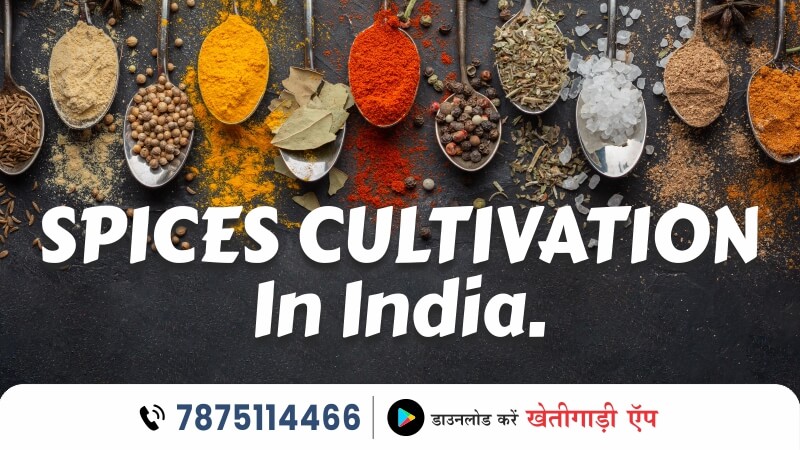For lovers of Indian cuisine being able to grow your own spices at home brings dishes to life with fresh, potent flavor. Many aromatic herbs and spices commonly used in Indian cooking can be easily cultivated in backyard gardens or even pots. With homegrown spices on hand you can create authentic Indian dishes bursting with bold, vibrant tastes.
Annual Herbs for Indian Cooking
- Coriander – The frilly leaves, known as cilantro, lend their bright, citrusy essence to chutneys, curries, rice, and meats. Let some plants bolt to produce the round coriander seeds, which have an earthier, more complex taste perfect for garam masala.
- Fenugreek – Appreciated for both its leaves and seeds, fenugreek adds a slightly bitter, nutty maple note. Its yellow flowers give way to long seed pods.
- Mustard – Grow mustard greens for salads and curries, then allow them to bolt to produce the prized mustard seeds. They can be used whole or ground into the classic Indian condiment.
- Black Cumin – Not to be confused with regular cumin, black cumin features bold, spiky seed pods bursting with peppery, oniony seeds. Sprinkle these on naan, rice, or yogurt.
Heat Up Your Garden With Indian Chilies
- Cayenne – The quintessential hot pepper, cayenne packs a punch of heat with a hint of fruity sweetness. It can be used fresh or dried and ground into powder.
- Serrano – Serranos don’t require quite as much heat and offer a sharper, more herbaceous burn. They’re perfect for salsas.
- Habanero – Among the hottest peppers, habaneros should be approached with care but provide intensely fruity heat. Just one or two per dish does the trick.
- Ghost pepper – For the truly adventurous, ghost peppers are otherworldly hot – some of the spiciest on Earth! Handle with extreme caution.
Tender Perennial Herbs and Spices
- Holy Basil – This sacred plant is prized for its peppery, clove-like aroma. Pinch off leaves to scatter over finished dishes. Grow it as an annual or bring plants inside over winter.
- Ginger – The knobby roots impart a wonderfully spicy, citrusy warmth. Grow ginger in pots to dig up rhizomes as needed for cooking.
- Turmeric – Valued for its earthy, bitter flavor and golden color, turmeric develops similarly to ginger underground and can be grown in containers.
- Lemongrass – With its intense lemony zing, lemongrass makes a stunning ornamental that thrives in pots. Clip off leaves as you need them.
Growing Tips for Indian Herbs and Spices
- Most prefer full sun and need at least 6 hours of direct light daily. Make sure drainage is excellent.
- To maximize growth in one season, start seeds indoors 6-8 weeks before your last expected frost. Transplant seedlings outside after hardening off.
- For pot culture, use large containers and a quality potting mix like an organic blend. Give plants ample room to reach maturity.
- Water regularly to keep soil consistently moist but not soaked. Apply a balanced liquid fertilizer every 2-4 weeks during growing season.
- Monitor for pests like aphids and fungus gnats. Target treatments to affected plants only to avoid contaminating edibles.
Harvesting and Preserving Homegrown Indian Spices
- Harvest leaves and seeds once they are fully mature and aromatic. Collect seeds on a dry, sunny day when seed heads are crispy dry.
- Ginger and turmeric can be harvested as needed once the plants are established. Just dig carefully to lift some rhizomes, leaving the rest intact.
- Dry seeds and pepper pods on racks or screens out of direct sun. For leaves and roots, use a dehydrator or warm oven on low heat.
- Store dried spices in airtight glass jars kept in a cool, dark place. They’ll retain potency for up to a year.
- Freeze chopped fresh herbs and roots for several months. You can also puree them with oil in ice cube trays for flavorful cooking cubes.
Growing your own patch of Indian spices allows you to control quality and tailor varieties to your taste preferences, You’ll delight in having ultra-fresh spices to elevate traditional recipes as well as inspire new fusion dishes, Experiment with essential Indian staples as well as lesser-known regional ingredients Let your garden be a canvas for culinary creativity and flavor discovery!
21 Herbs and Spices You Should ALWAYS Grow
FAQ
Is it cheaper to grow your own spices?
How to grow spices in India?
Which 3 spices are native to India?

